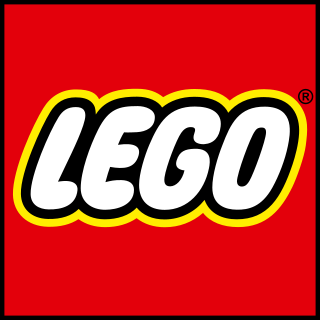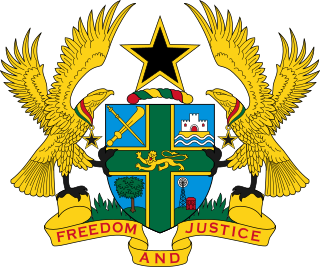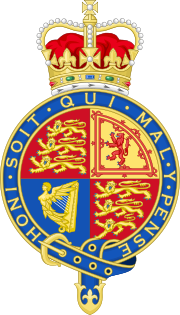Copyright is a type of intellectual property that gives its owner the exclusive right to make copies of a creative work, usually for a limited time. The creative work may be in a literary, artistic, educational, or musical form. Copyright is intended to protect the original expression of an idea in the form of a creative work, but not the idea itself. A copyright is subject to limitations based on public interest considerations, such as the fair use doctrine in the United States.

In the United States, a design patent is a form of legal protection granted to the ornamental design of a functional item. Design patents are a type of industrial design right. Ornamental designs of jewelry, furniture, beverage containers and computer icons are examples of objects that are covered by design patents.

Lego A/S is a Danish toy production company based in Billund. It is best known for the manufacture of Lego-brand toys, consisting mostly of interlocking plastic bricks. The Lego Group has also built several amusement parks around the world, each known as Legoland, and operates numerous retail stores.
The threshold of originality is a concept in copyright law that is used to assess whether a particular work can be copyrighted. It is used to distinguish works that are sufficiently original to warrant copyright protection from those that are not. In this context, "originality" refers to "coming from someone as the originator/author", rather than "never having occurred or existed before".

The Copyright, Designs and Patents Act 1988, also known as the CDPA, is an Act of the Parliament of the United Kingdom that received Royal Assent on 15 November 1988. It reformulates almost completely the statutory basis of copyright law in the United Kingdom, which had, until then, been governed by the Copyright Act 1956 (c. 74). It also creates an unregistered design right, and contains a number of modifications to the law of the United Kingdom on Registered Designs and patents.

Sweat of the brow is an intellectual property law doctrine, chiefly related to copyright law. According to this doctrine, an author gains rights through simple diligence during the creation of a work, such as a database, or a directory. Substantial creativity or "originality" is not required.
Copyright in architecture is an important, but little understood subject in the architectural discipline. Copyright is a legal concept that gives the creator of a work the exclusive right to use that work for a limited time. These rights can be an important mechanism through which architects can protect their designs.
Bridgeman Art Library v. Corel Corp., 36 F. Supp. 2d 191, was a decision by the United States District Court for the Southern District of New York, which ruled that exact photographic copies of public domain images could not be protected by copyright in the United States because the copies lack originality. Even though accurate reproductions might require a great deal of skill, experience and effort, the key element to determine whether a work is copyrightable under US law is originality.
Fair dealing is a limitation and exception to the exclusive right granted by copyright law to the author of a creative work. Fair dealing is found in many of the common law jurisdictions of the Commonwealth of Nations.
Under the law of United Kingdom, a copyright is an intangible property right subsisting in certain qualifying subject-matter. Copyright law is governed by the Copyright, Designs and Patents Act 1988, as amended from time to time. As a result of increasing legal integration and harmonisation throughout the European Union a complete picture of the law can only be acquired through recourse to EU jurisprudence, although this is likely to change by the expiration of the Brexit transition period on 31 December 2020, the UK having left the EU on 31 January 2020. On 12 September 2018 the European Parliament approved new copyright rules to help secure the rights of writers and musicians.
The copyright law of the United States grants monopoly protection for "original works of authorship". With the stated purpose to promote art and culture, copyright law assigns a set of exclusive rights to authors: to make and sell copies of their works, to create derivative works, and to perform or display their works publicly. These exclusive rights are subject to a time limit, and generally expire 70 years after the author's death. In the United States, any work published before January 1, 1925, is generally considered public domain.

British Leyland Motor Corp. v Armstrong Patents Co. is a 1986 decision of the House of Lords concerning the doctrine of non-derogation from grants. This doctrine is comparable to, but somewhat broader than, the doctrine of legal estoppel, assignor estoppel, or estoppel by deed in U.S. law. Under the doctrine of non-derogation from grants, a seller of realty or goods is not permitted to take any action that would lessen the value to the buyer of the thing sold.

The Digital Millennium Copyright Act (DMCA) is a 1998 United States copyright law that implements two 1996 treaties of the World Intellectual Property Organization (WIPO). It criminalizes production and dissemination of technology, devices, or services intended to circumvent measures that control access to copyrighted works. It also criminalizes the act of circumventing an access control, whether or not there is actual infringement of copyright itself. In addition, the DMCA heightens the penalties for copyright infringement on the Internet. Passed on October 12, 1998, by a unanimous vote in the United States Senate and signed into law by President Bill Clinton on October 28, 1998, the DMCA amended Title 17 of the United States Code to extend the reach of copyright, while limiting the liability of the providers of online services for copyright infringement by their users.

Gyles v Wilcox (1740) 26 ER 489 was a decision of the Court of Chancery of England that established the doctrine of fair abridgement, which would later evolve into the concept of fair use. The case was heard and the opinion written by Philip Yorke, 1st Earl of Hardwicke, and concerned Fletcher Gyles, a bookseller who had published a copy of Matthew Hale's Pleas of the Crown. Soon after the initial publication, the publishers Wilcox and Nutt hired a writer named Barrow to abridge the book, and repackaged it as Modern Crown Law. Gyles sued for a stay on the book's publishing, claiming his rights under the Statute of Anne had been infringed.
Typefaces, fonts, and their glyphs raise intellectual property considerations in copyright, trademark, design patent, and related laws. The copyright status of a typeface—and any font file that describes it digitally—varies between jurisdictions. In the United States, the shapes of typefaces are not eligible for copyright, though the shapes may be protected by design patent. Typefaces can be protected in other countries, including the UK, Germany, and France, by industrial design protections that are similar to copyright or design patent in that they protect the abstract shapes. Additionally, in the US and in some other countries, computer fonts—the digital instantiation of the shapes as vector outlines—may be protected by copyright on the computer code that produces them. The name of a typeface may also be protected as a trademark.

A Lego clone is a line or brand of children's construction blocks which is mechanically compatible with Lego brand blocks, but is produced by another manufacturer. The blocks were originally patented by The Lego Group in 1961 as "toy building bricks", and the company has since remained dominant in this market. Some competitors have moved to take advantage of Lego brand recognition by advertising their own products as compatible with Lego, with statements such as "compatible with leading building bricks".

Designer Guild Limited v. Russell Williams (Textiles) Limited, is a leading House of Lords case on what constitutes copying in copyright infringement cases. The House of Lords considered whether there was infringement of a fabric design. Although both the copyrighted work and the infringing design were different in detail, the overall impression of the designs was the same. This decision is significant because the House of Lords ruled that copyright infringement is dependent on whether the defendant copied a substantial portion of the original work, rather than whether the two works look the same. The outcome suggests that in the United Kingdom the overall impression of a copyrighted work is protected if the copied features involved the labour, skill and originality of the author's work, even if the copyrighted work and infringing work are different in detail.
Star Athletica, LLC v. Varsity Brands, Inc., 580 U.S. ___ (2017), was a Supreme Court of the United States case in which the Court decided under what circumstances aesthetic elements of "useful articles" can be restricted by copyright law. The Court created a two-prong "separability" test, granting copyrightability on conditions of separate identification and independent existence. In other words, the aesthetic elements must be identifiable as art if mentally separated from the article's practical use and must qualify as copyrightable pictorial, graphic, or sculptural works if expressed in any medium.

Paul Oliver v. Samuel K. Boateng was a ground-breaking case concerning copyright law in Ghana by the High Court of Justice. It reaffirmed the laws of Copyright relating to the requirements of copyright protection and also, the law relating to authorship in Ghana. This case elaborated the fact that the law of Copyright in Ghana is a creature of Statute and setting out some major general principles in Copyright Law in Ghana. The facts involved Mr. Paul Oliver, a programmer, who claimed ownership of Copyright in two versions of a Rural Banking software called Rural Banker and E- finance respectively. Paul Oliver sued Samuel Boateng and the second defendant Victor Gbehodor for licensing his software to other rural banks without his permission. The court in this case, Fundamentally, relying heavily on Statute, which in this case was the Copyright Act, 2005 emphasized how statute dependent the Law of Copyright in Ghana is. The case also made reference to the various subject matter that are not Copyright-able in Ghana throwing a specific light on Ideas.it made it clear that a person who expresses the idea in a concrete form will rather be the Author of a work. Also, this case made some decisions regarding may be referred to as a joint Author and also threw some light on Infringement of Copyright, Damages and also highlighted the existence of idea/expression merger scenarios.
Registration of intellectual property in Ghana is key to safeguarding one's intellectual efforts from infringement. Intellectual property law of Ghana encompasses intellectual property (IP) laws in Ghana, such as laws governing copyright, patent, trademark, industrial design rights, and unfair competition. The main intellectual property laws in Ghana include the Copyright Act, 2005, the Patents Act, 2003, the Trademarks Act, 2004, the Industrial Designs Act, 2003 and the Protection Against Unfair Competition Act, 2000. These are supplemented by regulations passed by the Legislature to augment the rate of development under IP laws.








